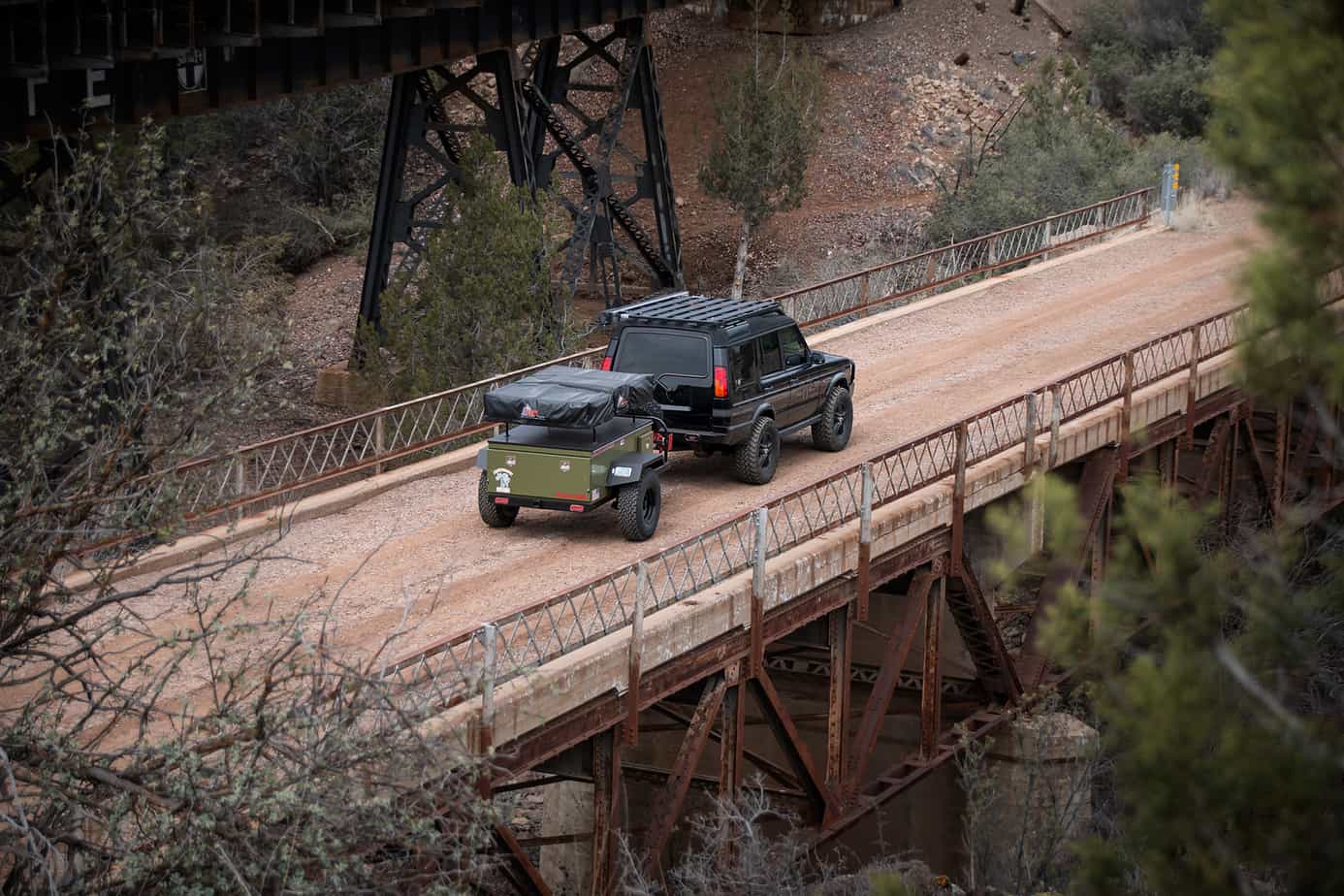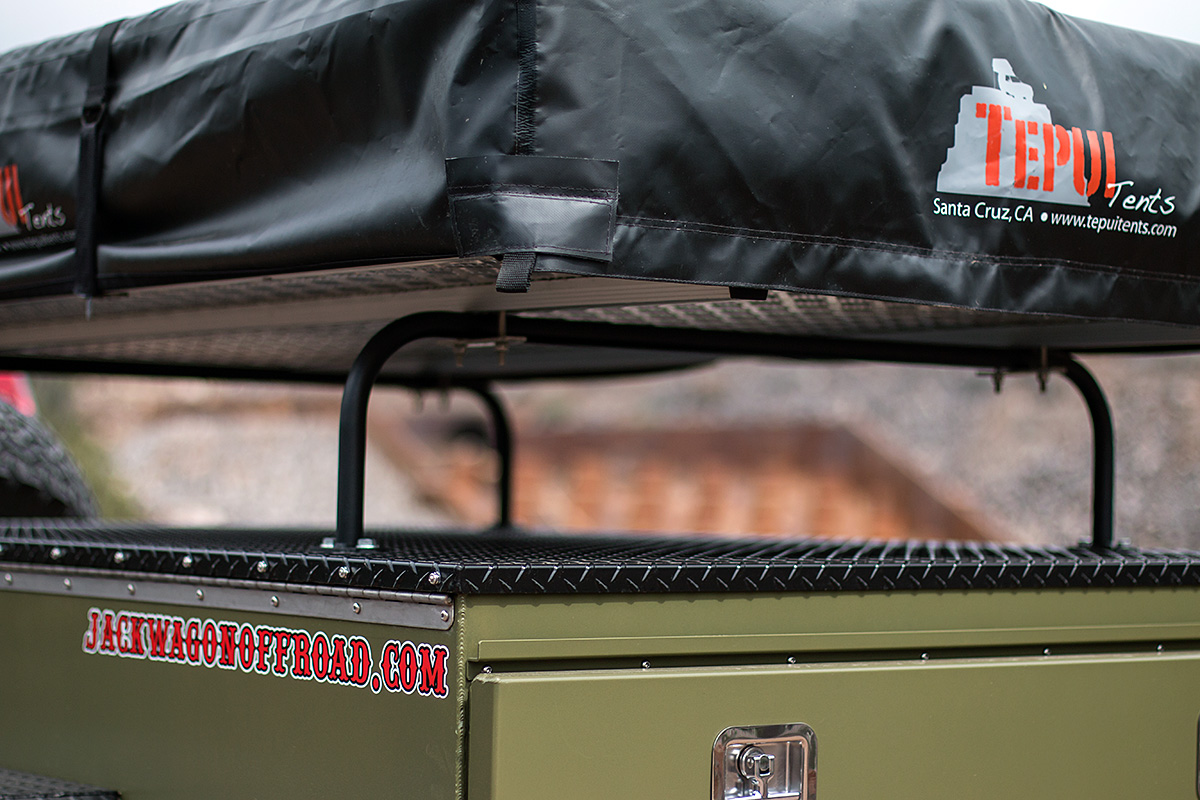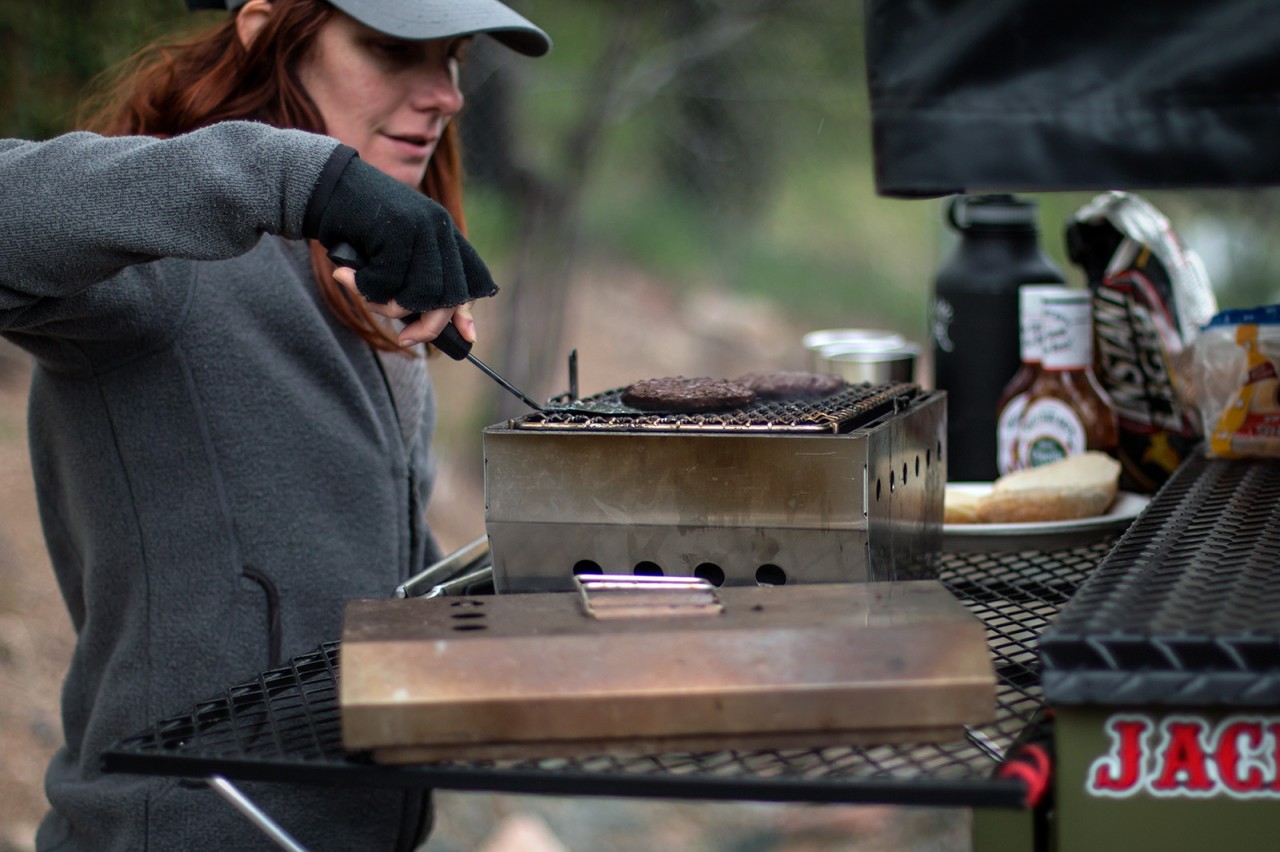The one quality I appreciate most about a manufacturer, beyond making a good product, is their willingness to listen to customer feedback and continually improve the product based on that feedback. Jackwagon Off-Road is just that kind of company: when we returned the first trailer JR spent the afternoon chatting with us about our ideas. A week later he invited us to swing by and check out the new improvements. You already know how we feel about towing the Basecamp—here’s our take on packing and camping with this nimble and versatile trailer.
Packing the Basecamp
As mentioned previously, the cargo hold of the trailer is cavernous. We opted to pack as the name suggests: with a full set of oversized “basecamp” gear, plus two full sets of backpacking gear for an overnight hike away from the trailer. The basecamp gear consisted of: one huge cabin tent, two winter-weight sleeping bags, two camp mattresses, two ARB camp chairs, eight-foot camp table, dual-burner stove, full kitchen kit (in a Pelican 1550), cast-iron cookware, lanterns, and the “expedition” sized medical kit (in another Pelican 1550). The backpacking kit consisted of two full sets of: Nemo two-person backpacking tents, Nemo backpacking sleeping bags and pads, lightweight JetBoil-based kitchen kits, and a few pouches of dehydrated food. Sure, we didn’t have actual backpacks handy, but you get the point: all this gear filled just over half of the cargo hold.
In it’s stock configuration the Basecamp features a simple twist-lock rail down each side for securing cargo. While it works well enough, I much preferred the optional L-track system, or the super beefy E-track option pictured above (rated for 6,000 pounds). If your cargo leaves a mess, the trailer also features a drain hole for easy clean-up. While it seems like a no-brainer, Jackwagon is the first manufacturer to offer this feature.
Up front on the cooler rack we added a large cooler. We also tossed yet another Pelican 1550 (filled with charcoal and lighter fluid) next to the cooler, but a few bundles of firewood would fit much better here. Generous spacing between the floor and the frame allows for drainage, and easy lashing of cargo to the frame rails. Optionally, the cooler rack can be bordered with L-track. Our Hi-Lift and shovel tuck in neatly below the full-size spare tire.
The tent bars bolt onto the sturdy reinforcement of the lid, and can handle even the largest trailer-top tents. Optionally, tie-downs can be added to the lid and the tent bars extended to handle a canoe/kayak. There’s also an optional longer tongue to ensure your watercraft clears the tow vehicle—we highly recommend this option if you have a Toyota FJ Cruiser or Land Rover Discovery as it allows the vehicle’s rear door to open fully with trailer attached.
Camping with the Basecamp
Riding on a Timbren Axle-Less suspension and 33-inch tires, most of the trailer sits nice and low for convenient in-camp access. The one exception is the kitchen counter out back. With my six-feet of height I found it quite comfortable to use, but it was a bit of a stretch for my five-foot-four traveling companion. Thanks to the new counter leg design, access to the tailgate remains unhindered even with the kitchen counter set up (pictured below).
The Basecamp is designed with simplicity and utility in mind: no plumbing to leak, no power systems to short out, and no complicated racks or awnings to fiddle with. It’s the perfect match for folks needing a little extra cargo space, and who prefer the center of camp not be attached to the vehicle. It excels at hauling bulky camping and adventure gear hassle-free into the backcountry, then blending into the background so you can focus on what really matters: getting out there.
The base model Jackwagon Basecamp starts at a modest $6,500, and can be had nicely loaded for less than $9,000. Visit Jackwagon Off-Road for complete specs and customization options.












